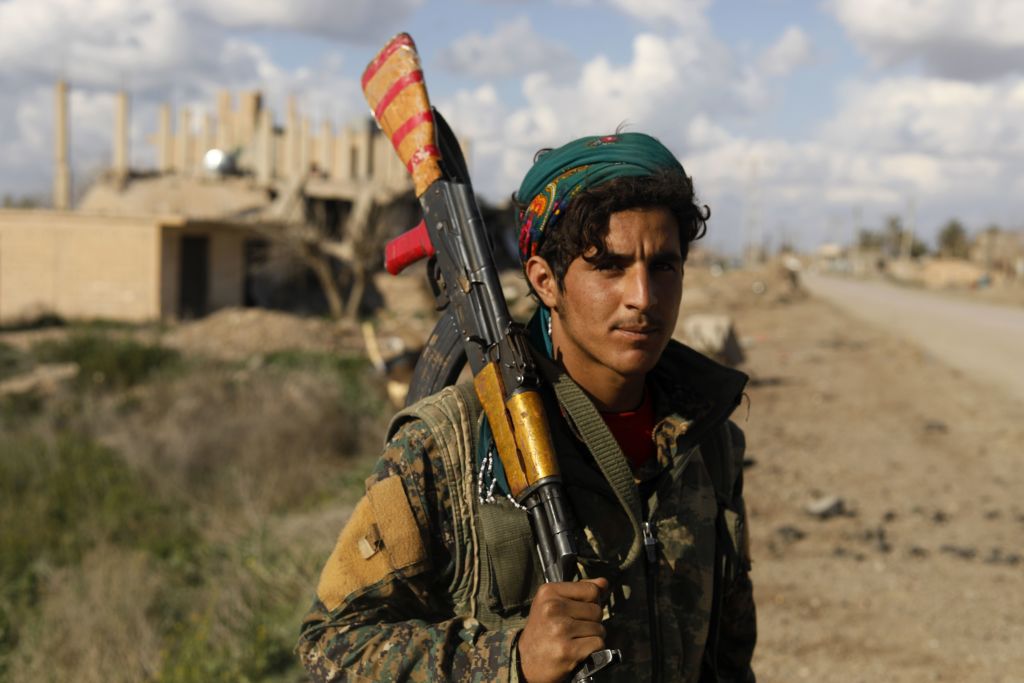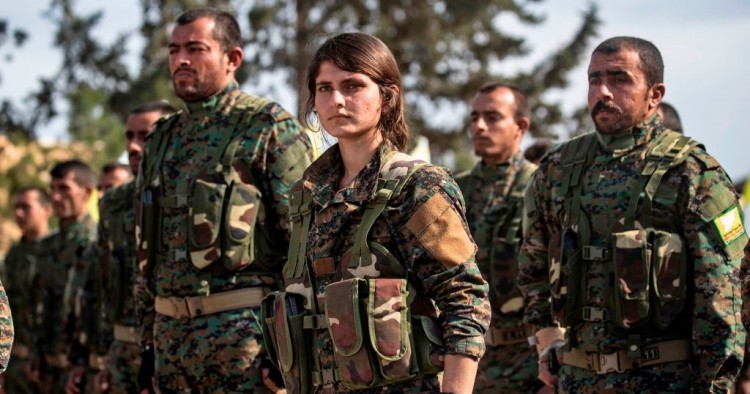The 2018 National Defense Strategy shapes the way the U.S. military competes with state and non-state adversaries. It specifically calls for improvements in partner force operations (PFO) — especially counter-terrorism (CT) — so that regional partners can keep up CT pressure while America’s special operators shift focus to help the nation gain and maintain an advantage over the near-peer competitors of Russia and China.
The United States has explored a range of different approaches to partner force development. Two of these stand out. One seeks to create a scalable mirror image of U.S. forces. The other focuses on building a partner military with a slight tactical advantage over their adversaries. This paper explores both of these approaches and recommends a more focused way forward.
Mirror imaging is a common approach to Western partner development. American-led coalition forces took this approach in Iraq in May 2003, at the declared end to major combat operations. With admittedly inadequate planning, U.S. forces shifted from combat operations to sustainment and stability operations. In short order they took on the task of building the new Iraqi Security Forces (ISF). Absent an obvious alternative, American leaders sought to create an Iraqi force that would be smaller scale, yet mirror the U.S. air and ground capabilities. Neither the new Iraqi forces, nor the forces they were designed to mirror, were suitable for the asymmetric fight at hand.
Estimates from global security reports indicate that between 2004 and 2014, the fledgling Iraqi Army was supplied with the following equipment: 210 M1A1M U.S. Abrams tanks, including all associated armament and communication capabilities; 77 T-72 tanks from Hungary; 704 armored personnel carriers and armored vehicles donated by the United Arab Emirates and Pakistan; 8 M88A2 heavy recovery vehicles; $579 million worth of High Mobility Multipurpose Wheeled Vehicles (HMMWVs); and all AK-47s and small arms required for their security forces.
In parallel with ground force development, the U.S.-led coalition reestablished the once-robust Iraqi Air Force. Rough estimates indicate that between 2004 and 2014 they received 23 MI-28 NE Russian helicopters; 12 L-159 Czech helicopters; 10 Mi-17 Russian helicopters; 2 PZL W-3 Polish helicopters; 18 F-16 U.S. fighter jets; and 12 Sukhoi SU-25 Russian fighter jets. The Iraqi Air Force rebuilding efforts cost in excess of $5.6 billion. It total, between 2003 and 2014, the Government of Iraq (GOI) bought or received over $10 billion in military equipment.
In June 2014, an irregular army of lightly equipped ISIS terrorists defeated the internationally supported and equipped ISF, murdered Iraqi leaders, and brutalized Iraqi citizens with very little resistance. ISIS soldiers then commandeered and used vast amounts of Iraqi military weapons and equipment. The decade-long effort to create a viable Iraqi force in mirror image to the U.S. had failed.
A different approach would have been to supply the Iraqis with basic military equipment for their immediate, asymmetric challenge, and simultaneously enable that partner with high-end conventional military support from partnered U.S. forces. This approach — which we call the tactical advantage approach — provides the partner force with the ability to effectively defeat localized enemy threats while still developing their own national defense capabilities; trying to do both at once has too often resulted in failure. In this approach, custody and long-term maintenance of major combat equipment remain with the United States instead of the partner force. This approach was taken by the United States as it fought ISIS in both Iraq and Syria after the 2014 debacle.
The scope of this study will run from the inception of the Syrian Democratic Forces (SDF) in October 2015 until the U.S. announced, but did not withdraw from Syria in October 2019. The SDF were the partner force of choice for the United States and other Western nations and they were successful in destroying the self-proclaimed ISIS “caliphate” that spanned across the borders of Iraq and Syria.
In October 2015 U.S. support started in earnest for the SDF, consisting of 45 tons of weapons and ammunition. This supply of basic infantry weapons and ammunition did not include sophisticated systems like anti-tank missiles or anti-aircraft-capable weapons. Over the course of the four-year war with ISIS, material and advisor support increased. With those increases in support — accompanied by newly-empowered tactical special operations forces (SOF) — the SDF achieved key battlefield victories in Manbij (2016), Raqqa (2017), and the final ISIS holdout of Baghouz (2019).

In 2017, a number of media outlets reported that the United States invested $2.2 billion in the successful effort to defeat ISIS. The lethal combination of U.S. SOF advisors and precision U.S. combat air power provided the SDF a tactical advantage that allowed them to defeat the ISIS forces and dismantle the geographic ISIS caliphate. Additionally, the seeding of SOF advisors in the partner force allowed for the use of broad and empowering self-defense rules of engagement. This generated a deterrent against competing Turkish and Russian forces in the vicinity of the combined SDF and U.S. SOF. Together with the tactical defeat of ISIS, this deterrent presence helped to at least temporarily stabilize the region.
Although the tactical advantage approach to PFO does require significant financial and physical investment (although far less than mirror imaging), it is clearly more effective and more efficient than the mirror image approach. One could argue that simply providing a tactical advantage to a partner force doesn’t properly prepare them for a sustained state on state conflict. That point is valid, but in most instances PFO are considered relatively short-term options, typically dealing with non-state entities. A more appropriate model for state on state conflicts would be standing allegiances between allied nations, through a memorandum of understanding between the U.S. and said partner force. One strong tenet of the tactical advantage approach is that after victory is achieved there aren’t large support requirements. By contrast, the mirror image approach demands a significant and lasting operations and maintenance budget, which most countries can’t sustain.
Additionally, the mirror image approach has the potential to create imbalances of power and an arms race within the region. Both of these factors are mitigated with the tactical advantage approach because sophisticated weapons systems and large-scale strike platforms remain under the custody and control of U.S. forces. The surface to air missiles distributed to Afghan-jihadi forces in the 1980s for use against Russian forces subsequently became a significant concern for the U.S. when conducting CT operations following the Sept. 11, 2001 attacks. Tracking down and procuring these errant weapons systems became a massive effort that spanned Afghanistan and Pakistan, as well as parts of the African continent. This would not have been a cause for concern if the missiles were deployed on the Afghani battlefield in the 1980s by U.S. SOF or other covert operators.
In conclusion, one of the underpinning aspects of the U.S. 2018 National Defense Strategy is to help create strong partners in volatile regions that are willing and able to shoulder regional issues, thus allowing U.S. elite operators to focus on near peer operations. To support this aspect of the National Defense Strategy, the right approach with PFO is critical. As the last 15 years of experience in Iraq and Syria have made clear, the tactical advantage approach provides a better way forward, achieving U.S. policy goals without creating unsustainable partner forces or giving rise to regional power shifts and arms races.
Mick Mulroy is a Senior Fellow for National Security and Defense Policy at the Middle East Institute, retired Paramilitary Operations Officer in the CIA’s Special Activities Center, and former Deputy Assistant Secretary of Defense for the Middle East. Eric Oehlerich is a Senior Fellow for Technology and National Security at the Middle East Institute and retired U.S. Navy Commander (SEAL) from the Naval Special Warfare component of the USSOCOM’s Joint Special Operations Command. They are also Analysts for ABC News and Co-founders of the Lobo Institute. The views expressed in this article are their own.
Photo by DELIL SOULEIMAN/AFP via Getty Images
The Middle East Institute (MEI) is an independent, non-partisan, non-for-profit, educational organization. It does not engage in advocacy and its scholars’ opinions are their own. MEI welcomes financial donations, but retains sole editorial control over its work and its publications reflect only the authors’ views. For a listing of MEI donors, please click here.













